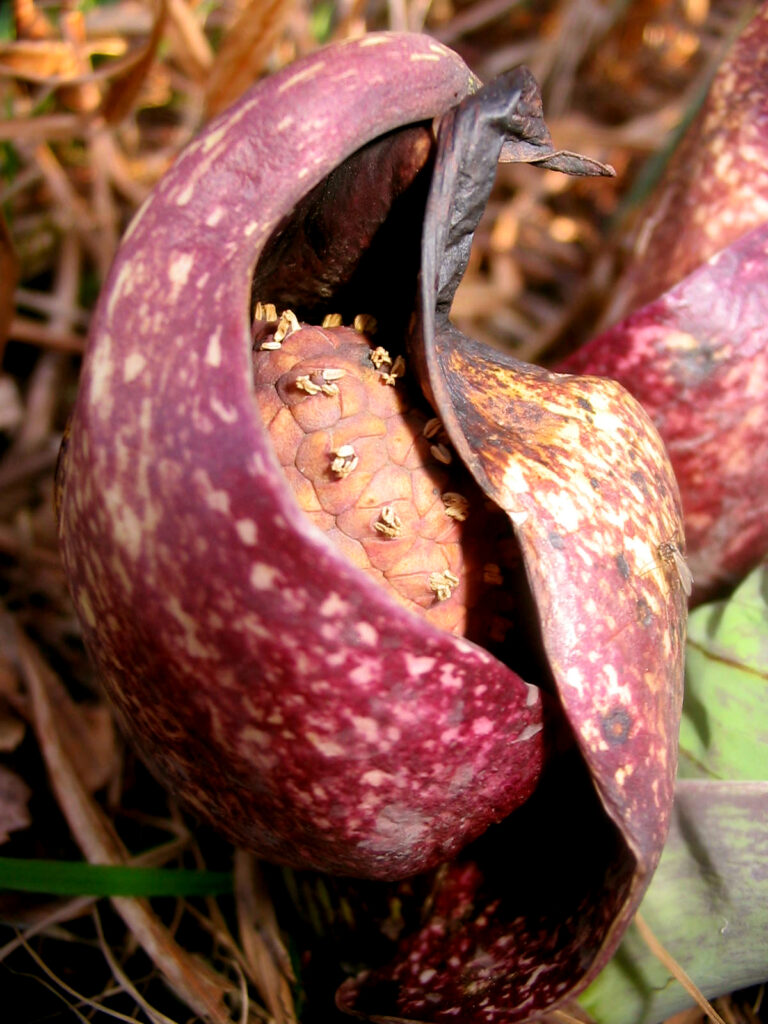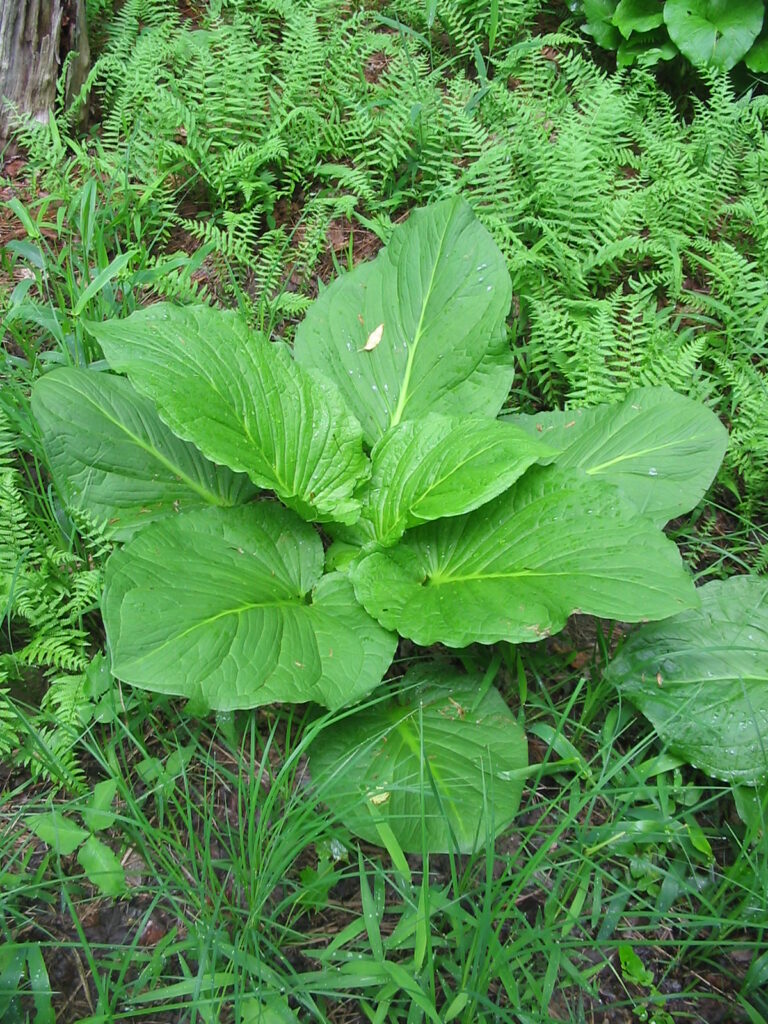Secrets of Skunk Cabbage
For many years, I took skunk cabbage (Symplocarpus foetidus) for granted. It was that stinky plant that dominated wetlands and helped frogs hide from my youthful pursuit. In college, I learned how it was a wetland indicator plant, meaning its presence marked a wetland. It wasn’t until I met Master Naturalist (and later friend!), Siobhan Percey, that my views of skunk cabbage changed.
Every year, Siobhan leads a skunk cabbage “swamp stomp.” Despite its name, we don’t deliberately stomp on skunk cabbage but rather head out into the wetlands in search of skunk cabbage as it blooms. Skunk cabbage flowers are tiny and are clustered in an apparatus known as an inflorescence. The inflorescence has a fleshy covering (spathe) over the reproductive parts (spadix) that protrude in the center. It is one of Maryland’s first flowering plants of the year, often blooming in early January. Usually, snow is on the ground at this time, so skunk cabbage has evolved a way of heating up its inflorescence (via thermogenesis) to melt snow and provide an attractive environment for potential pollinators. For up to two weeks, the spadix can generate temperatures an average of 20 degrees warmer inside than the surrounding air temperature! The stinky odor of the flower coupled with its purplish color makes it attractive to carrion flies, gnats, and beetles which are the primary pollinators. Once pollinated, seeds will develop as the rest of the flower decays. Eventually, the seeds will drop into the soil to later germinate.

The flowers aren’t the only interesting part about skunk cabbage. The large, stinky leaves are filled with calcium oxalate crystals that “taste like burning” and generally discourage critters from taking a bite. However, one animal enjoys it in the spring: black bears. You see, black bears don’t go to the bathroom during their winter slumber, so they need something that will help clean out a stalled system. Skunk cabbage is the perfect “spicy” laxative for bears.
Plants can live around 20 years, but some sources say that they can live much longer as well. Most of the plant is actually underground in the form of contractile roots that anchor it in wet soils and store nutrients for its winter bloom period. As the plant ages, the leaves can get up to two feet in length. When broken, volatile organic compounds are released, producing the fetid odor many know well.
Skunk cabbage can be found in different swampy areas in Arden. Keep an eye out and take whiff!
